Warning - this circuit operates with voltages in the range of several hundred volts. Although the frequency is high and the current is fairly low, if you decide to build this circuit, you do everything solely at your own risk.
This is a simple voltage converter for decorative neon lamps ("flicker flame" type) operating from a 5 V power supply (for example USB).
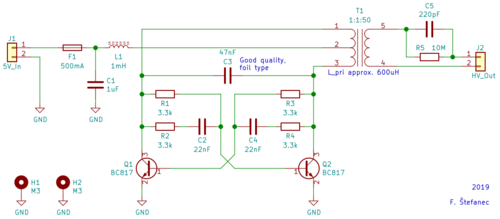
Schematic diagram (click for full resolution)
This circuit was designed to power "flicker flame" style decorative neon lamps from low voltage power sources. Although the output voltage is quite high, the current is low and the operating frequency is fairly high (less dangerous compared to 230 V, 50 Hz mains). It is based on the Royer oscillator circuit. The primary winding of the transformer T1 forms a resonant circuit with C3, this sets the no-load operating frequency. The transformer was taken out of some old photocopy machine. Its primary has an inductance of approximately 600 µH and is center tapped. The winding ratios (½ primary:½ primary:secondary) are around 1:1:50. The RMS output voltage with no load is around 2.2*Uin*Nsec/Npri (275 V here). The output current is reactively limited by C5 (220 pF). If the capacitance of C5 is too low, the neon lamp will be too dim. If it's too high, the resonant circuit could be loaded too much, which would lead to decreased Q factor, deformed waveform, decreased efficiency (or in the worst case failure to oscillate and/or damage to transistors Q1, Q2). The choke L1 is used to current-feed the resonant circuit and should have an inductance of at least 1 mH. A resettable fuse is used for safety (F1). Transistors Q1, Q2 are BC817-40, but other types can be used (IC>500 mA, VCE>30 V - e.g. BC337, BD139, BC639). If β is too low, resistances of R1-R4 have to be decreased. The circuit is built on a single sided PCB. A mix of SMD and THT parts is used. The measured operating frequency was around 20-25 kHz.
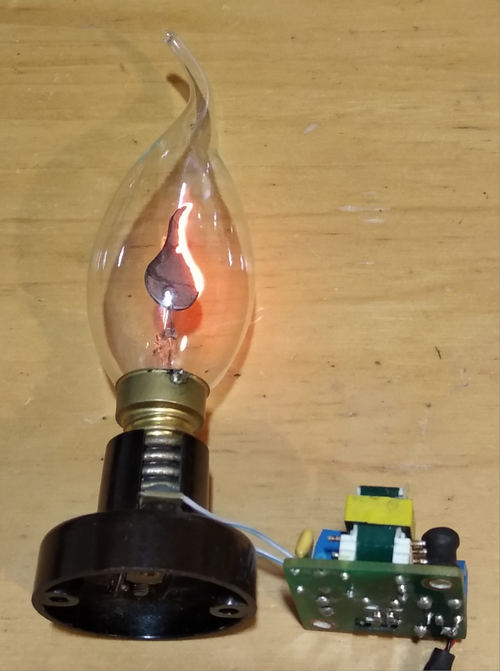
Operation (click for full resolution)
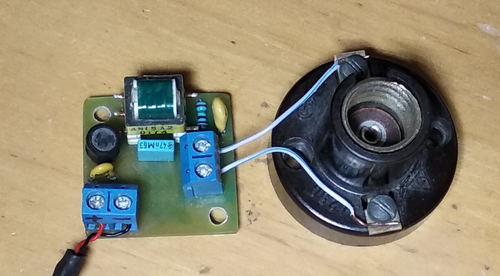
Finished circuit (click for full resolution)
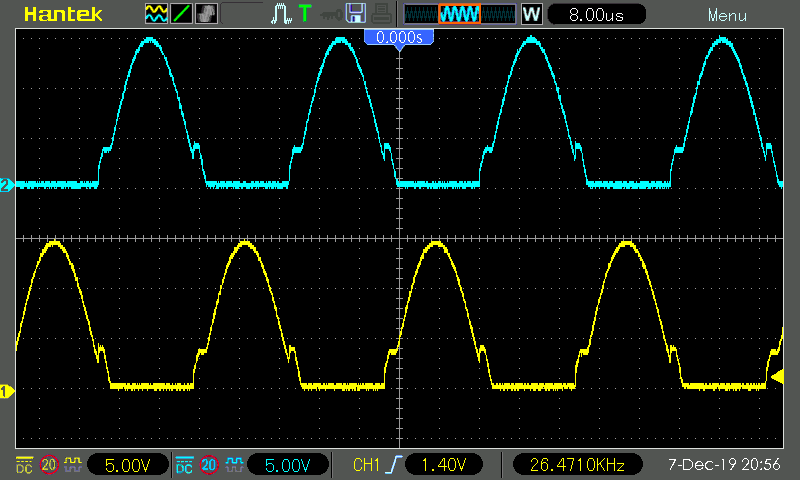
Collector waveforms, no load (click for full resolution)
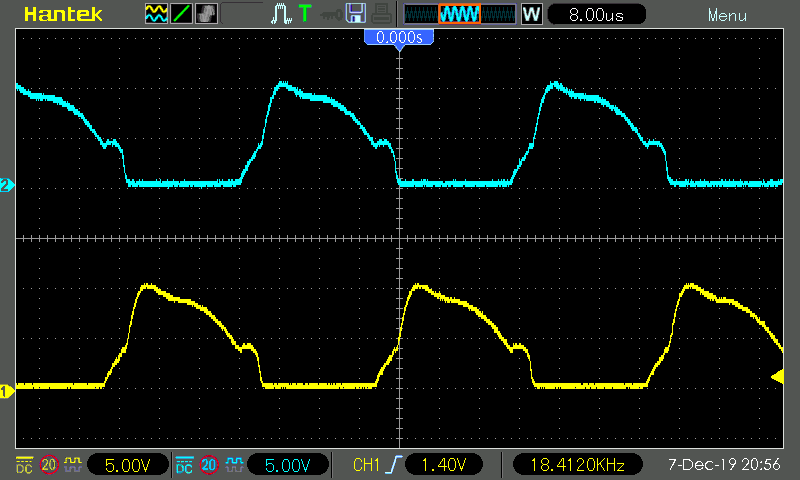
Collector waveforms, higher load (click for full resolution)